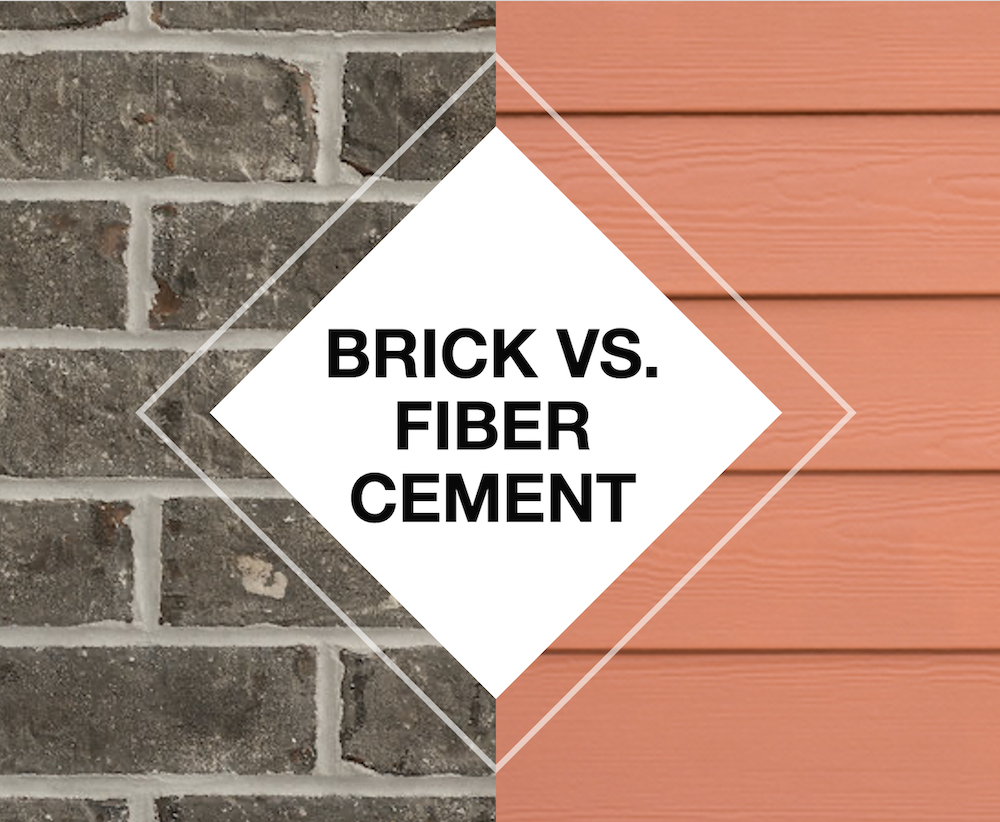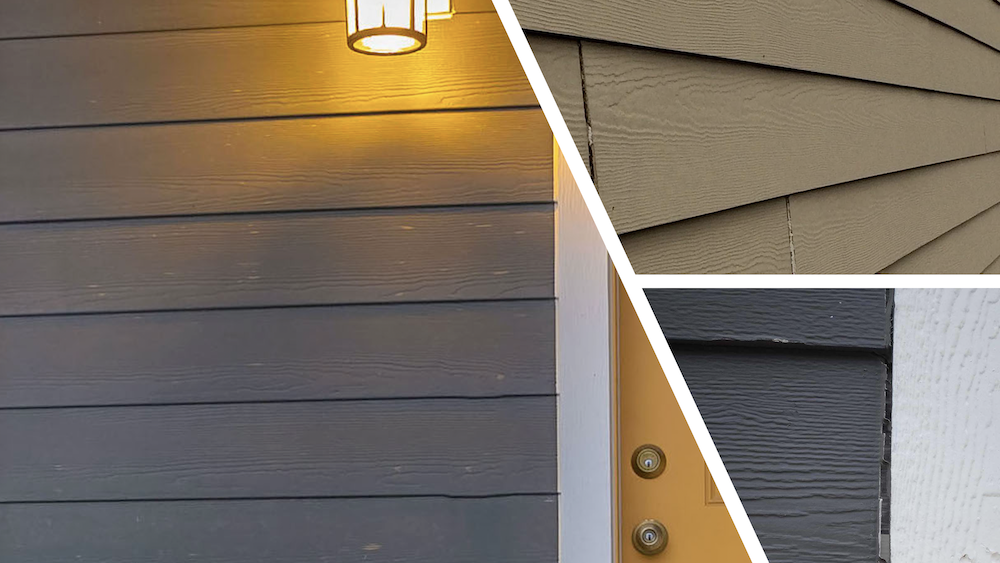Let’s Compare the Pros and Cons!

Your new home is the biggest investment you’ll ever make and, regardless of your budget, the exterior of your house is the best area to invest in. As a smart investment, your home’s exterior should provide long-term value (i.e. higher resale) and also deliver immediate benefits too – features that better protect your family and save you time and money on maintenance and repairs. There are many options for exterior cladding and, as a big-ticket item, it may be tempting to choose a less expensive option. Before you decide, consider that sometime savings up front means more expense down the road. In this article, we’re taking a look at the pros and cons of brick vs. fiber cement siding for your home’s exterior.
Initial costs can be deceiving!
Exterior cladding is perhaps the biggest portion of your budget. Brick is generally considered a more expensive option, but when you compare brick and fiber cement siding, the incremental difference on a mortgage payment is only about $47/month*. Since we actually pay in increments and not a lump sum, it’s important to get an accurate idea of how affordable brick can be. Plus, when you consider the added costs of maintenance with fiber cement siding, you’ll find that brick saves you time and money over the years.
*Listed costs for 2,266 sq. ft. of exterior wall space for a 2-story home including product and typical installation. Brick pricing is based on queen size (QS) brick. Pricing data by RSMeans | The Gordian Group 2017; Mortgage data based on 2019 30-year fixed rate.
Aesthetics - natural vs. artificial
Creating and maintaining excellent curb appeal makes you proud of your home and guarantees a return on investment when you sell. Brick and other masonry homes command a higher resale value. Why? Because of brick’s natural durability, its aesthetic doesn’t age, fade, crack, break, or grow dated. By contrast, fiber cement siding is prone to fading, has visible seams, can show cracks in the caulking, and generally has a ‘plasticky’ look compared to the charm of real brick. And while fiber cement siding does come in several colors, brick gives you almost endless options with dozens of brick shades and textures and the ability to add creative details around windows and doors, on porches and arches, and much more.

Installation - standard vs. complex
Brick installation is tried and true over generations, while installation of fiber cement siding is complex and if not done correctly causes unsightly and costly moisture issues. A quick online search reveals a lot of information on common installation errors. Any faults in the installation create opportunities for moisture damage that leads to swelling, crumbling, delamination between layers, and loss of paint adhesion. Keep in mind too, that the 30- or 50-year warranty that comes with many fiber cement products are void if the product is improperly installed.
Maintenance - none vs. re-painting, inspections & repairs
In order to keep fiber cement siding looking good, it requires fairly regular painting – every 5 – 7 years on average. That’s a big expense that you would never have with a brick exterior. Plus, you would need to regularly inspect the caulking used for joints, edges, around windows and trim; caulking is prone to cracking and wearing down over time. And, if you need to do repairs, it’s hard to keep the entire exterior looking uniform. If you experience damage from accidents, sun fading or storms, paint touch ups might end up looking patchy too. Compare this work to never having to clean, repair or replace your brick exterior – that’s saving time and money!
Energy Efficiency - exceptional vs. average
A masonry home, like brick, leads the way in energy efficiency. The excellent thermal mass that brick provides protects your home’s interior temperature from both cold and heat, so you will save on heating and cooling costs no matter what climate you live in. You may have heard about R-value in terms of gauging energy efficiency of various building materials; however, this measurement doesn’t work for brick because walls are more than the cladding materials. Brick wall assemblies involve thermal mass and air space which create its remarkable energy performance. Read this interesting document to see how a brick veneer outperforms fiber cement siding.
Durability and Safety - strongest vs. mediocre
In many areas of North America, severe storms – including hail and wind events – are becoming stronger. This reality affects our insurance rates and it simply makes sense to protect yourself with the most durable exterior. A brick home provides superior protection from storms and fire. The Brick Industry Association provides this helpful web page with videos and studies that show how well brick performs to keep you, your family and your investment well protected.
We hope we’ve provided helpful information when it comes to choosing a durable, high performance exterior. Brick definitely delivers important short-term and long-term benefits that protect your investment, keep your family safe, and save you time and money. For design inspiration, follow us on Instagram and check out our brick selection online. And be sure to view our helpful videos!
